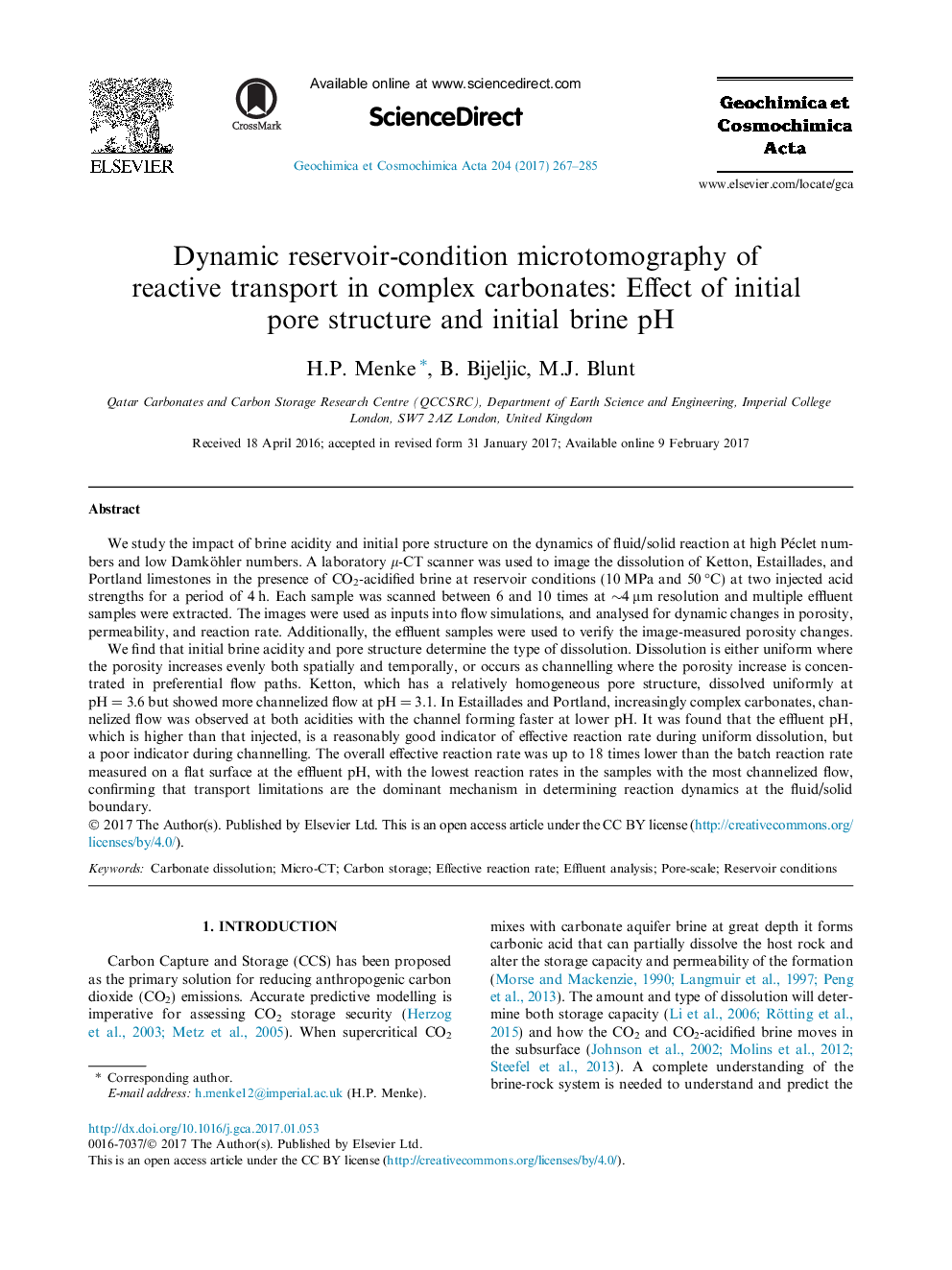| Article ID | Journal | Published Year | Pages | File Type |
|---|---|---|---|---|
| 5783550 | Geochimica et Cosmochimica Acta | 2017 | 19 Pages |
Abstract
We find that initial brine acidity and pore structure determine the type of dissolution. Dissolution is either uniform where the porosity increases evenly both spatially and temporally, or occurs as channelling where the porosity increase is concentrated in preferential flow paths. Ketton, which has a relatively homogeneous pore structure, dissolved uniformly at pHÂ =Â 3.6 but showed more channelized flow at pHÂ =Â 3.1. In Estaillades and Portland, increasingly complex carbonates, channelized flow was observed at both acidities with the channel forming faster at lower pH. It was found that the effluent pH, which is higher than that injected, is a reasonably good indicator of effective reaction rate during uniform dissolution, but a poor indicator during channelling. The overall effective reaction rate was up to 18 times lower than the batch reaction rate measured on a flat surface at the effluent pH, with the lowest reaction rates in the samples with the most channelized flow, confirming that transport limitations are the dominant mechanism in determining reaction dynamics at the fluid/solid boundary.
Keywords
Related Topics
Physical Sciences and Engineering
Earth and Planetary Sciences
Geochemistry and Petrology
Authors
H.P. Menke, B. Bijeljic, M.J. Blunt,
